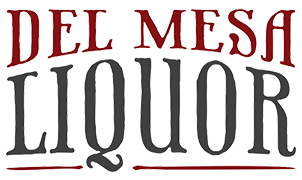There is no precise science to determine how long a wine will last. To decide which wines age best, the majority of wine professionals utilize deductive reasoning based on their previous experiences. However, when tasting a glass of wine to see if it will stay, most wine lovers agree on four qualities.
Remember that a wine will likely not taste as good in the first few years of its life, even if it ages nicely for 12 years. High acidity, a tannic structure, a low alcohol content, and residual sugar are the characteristics we wine geeks look for in a wine that will age well.
How can a wine become age-worthy, then? Although it's simple to mistake price or quality for aging potential, neither of these factors, nor high critic ratings, are always reliable predictors. Occasionally even the most experienced buyers struggle to predict which wines will age and for how long. Age-worthy wines, however, frequently have several characteristics that make them unique from other wines.
- Strong acidity
- arranged tannins
- balanced levels of alcohol
- Complexity
- Surplus sugar in oak barrels
The Essential Traits Of Wines That Age Well
1. Acidity
Red wines with higher acidity (a lower pH) often stay longer even though no precise pH indicates age-worthiness. Low pH protects against chemical alterations, such as oxidation, that degrade wine. Find out more about wine's pH.
Higher acidity wines typically last longer. A wine starts losing its acidity as it ages and flattens out. A wine with lesser acidity at the start of its life will probably not endure over time. A wine with more acid has a longer runway as it ages.
2. Tannin

Red wines with more tannin tend to age better than red wines with less tannin because tannin serves as a structural component. When creating wine, tannins come into touch with the grapes' pips and skins, as well as with oak aging.
When the tannins in a wine are appropriately balanced (i.e., the ratio of "grape tannin" to "wood tannin"), the wine will gradually "smooth out" as the tannins degrade. Even though tannins can aid in a wine's ability to age well, if the wine is not well-balanced at the outset, it will never get better with time.
White wines can age well without tannin, and several types can. Furthermore, a little substance known as anthocyanins is required because it interacts with the tannins over time to transform them into the fruity, palatable wine that would result.
3. Alcohol Level
Non-fortified wine's alcohol is volatile, speeding up the process of wine turning into vinegar. A non-fortified wine will generally last longer with a lower alcohol content. Of course, there are exceptions to any rule.
However, many dry red and white wines fall into this category. I look at the alcohol content while looking for a wine to age and aim for an ABV under 13.5%. Fortified wines, which have an alcohol content of 17–20%, may have the most extended shelf lives despite the fact that high alcohol levels destroy conventional still wines.
Fortified wines have added additional spirits, such as Port, and have an ABV of about 20%. (ABV). Some of the best-aged red wines of all are made as a result of fortification. For instance, you may still find some extremely lively Maury wines from the 1920s (a French fortified sweet red wine).
4. Residual Sugar
The popularity of aging dry wines causes this characteristic of wine to be frequently disregarded. It turns out that sweet wines like Port, Sherry, Sauternes, and Riesling typically have the most extended shelf lives.
5. Sweetness
White wines can age better when they are sweeter because the sweetness is a preservative at higher levels. Because of this, some dessert wines, including Sauternes and Tokaji (pronounced "Toe-Kye"), have been known to mature for 50 years or longer.
6. Climate
Climate is another aspect that affects wine lifespan; for example, Bordeaux wine often has a substantially longer shelf life than, say, Napa Cabernet. (There are some that can engage in direct conflict, but bear with me for the purposes of discussion.) Wines from cool climates have higher acidity levels, which also extends the life of the wine.
7. Color

The white wine guidelines are slightly different because they don't contain anthocyanin, the red pigment. Many age-worthy white wines start practically clear in color because white wines oxidize, which causes them to deepen. When white wines become yellowish brown, they are typically over the hill (oxidized).
The vibrancy of the color is more important than the density (how opaque) of the color. Prematurely aged red wines frequently have a duller appearance and can have a more yellowish rim hue. For more information, view the full color of the wine chart.
Few Facts about Wine Being Age Worthy
However, not all wines have the capacity to age. The vast majority of wines are intended to be consumed within a few months after the date of purchase. Keeping them in storage for this long won't affect the flavor or value of the wine, even if an ordinary red wine may have a lifespan of, say, five years (or up to three for whites). By the time you get to them, the majority will probably have lost their original appeal.
Final Thoughts
For many collectors, wine aging is a vital and satisfying element of the collecting process. A young wine can be obtained and aged for a number of years to gain a number of benefits, including the emergence of rich, mature tastes and that desired return on investment.
Spend some time learning about these regions' top vintages. Choose a few famous producers, and study wine reviews to identify the best times to consume them. Congratulations if the wine will likely last until the important milestone you want to celebrate! When the time comes to open the bottle, keep a backup on hand, just in case. Store it carefully.
 Log in
Log in
 My Wishlist
My Wishlist Reward Program
Reward Program Corporate Gifts
Corporate Gifts Customer Help
Customer Help


